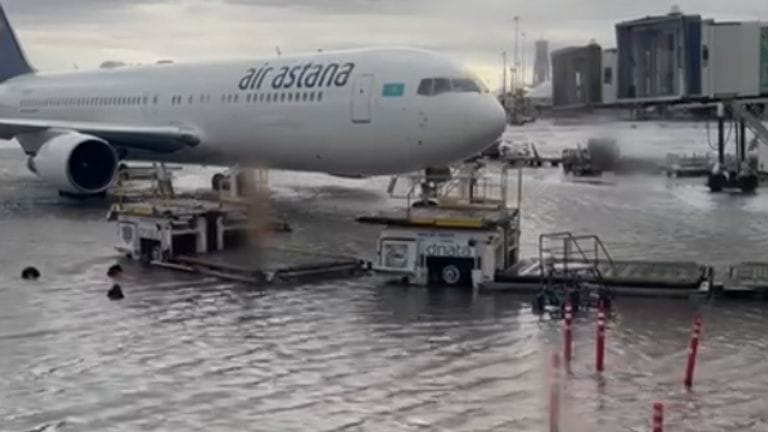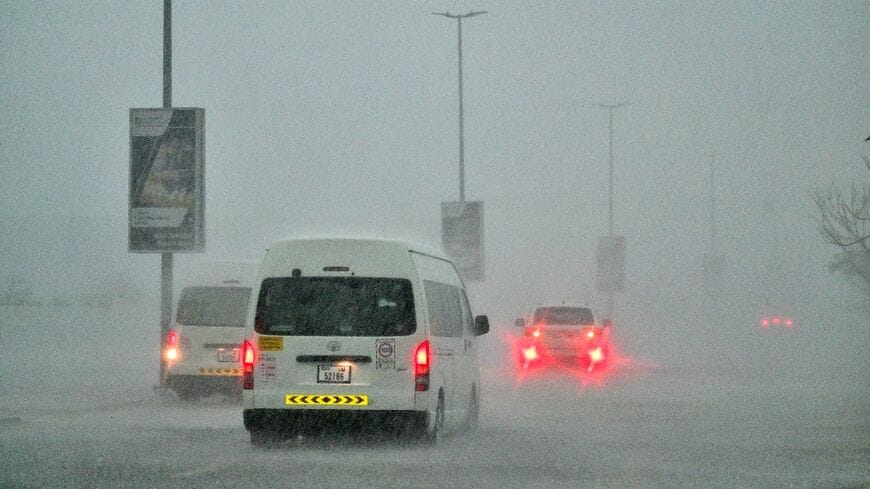In recent days, Gulf states have been pummeled by relentless heavy rain, triggering deadly flash floods and wreaking havoc on transportation networks, notably at Dubai International Airport, the world's second-busiest airport. The airport authorities issued warnings of extremely challenging conditions, urging passengers to reconsider their travel plans due to widespread inundation. Tragically, in northern regions, a man lost his life after his vehicle was swept away by flash floods. Meanwhile, in Oman, the grim toll of casualties rose to 19 with the discovery of a young girl's body in Saham. The impact on air travel has been substantial, with approximately 300 flights to and from Dubai International Airport being cancelled on Wednesday alone, and many more experiencing delays. Emirates, a prominent global airline headquartered in Dubai, halted check-in services for departing passengers until the following day.

With meteorologists predicting further thunderstorms, heavy rainfall, and strong winds, authorities remain on high alert, cautioning residents about ongoing flood risks, especially in low-lying areas that remain submerged.
In an unprecedented weather event, the United Arab Emirates encountered its most significant rainfall in 75 years, as reported by the National Centre of Meteorology. The deluge, totaling 254.8mm (9.7in) within less than 24 hours, pounded Khatm al-Shakla in the al-Ain region, surpassing all historical records. This exceptional rainfall dwarfs the country's average annual precipitation of 140-200mm, with Dubai typically receiving a mere 97mm annually. The downpour caused chaos across the region, with dramatic scenes unfolding in Dubai, where Sheikh Zayed Road, a major thoroughfare, turned into a flooded quagmire, stranding numerous vehicles and triggering long traffic jams. Amid the turmoil, travelers faced unprecedented challenges at Dubai International Airport, where stranded passengers endured agonizing delays and disarray.
British tourists Kate and Andrew Golding, stranded for 12 hours, described scenes of pandemonium, emphasizing the airport's breakdown in organization and communication. Likewise, Anne Wing and her family, waiting for their flight to London Heathrow, faced a nightmare of delays, overcrowding, and inadequate provisions, echoing the sentiments of numerous travelers left without proper assistance or information.

While no fatalities were reported in Dubai, Ras al-Khaimah witnessed a tragic loss when an elderly man perished in a flash flood. Despite the rainfall relenting by Tuesday evening, Dubai International Airport remained beset by disruption, prompting Emirates to suspend check-in services until Thursday morning. With operations severely impacted and passengers enduring prolonged waits, Dubai Airports CEO Paul Griffiths underscored the unprecedented nature of the storm, highlighting the challenges faced in restoring normalcy. The ordeal at the airport, described by stranded passengers like software engineer Kanish Kumar Deb Barman, reflects the widespread disruption and frustration experienced by travelers caught in the midst of the tumultuous weather conditions.
Prior to the storm's onslaught, the UAE's National Emergency Crisis Management Authority issued a stark warning, urging residents to remain indoors. With safety in mind, the government implemented remote work directives for its employees, while private schools transitioned to online learning platforms.
Meanwhile, in Oman, where the brunt of the storm wreaked havoc, over 1,400 individuals sought refuge in emergency shelters. As a precautionary measure, schools and government offices shuttered their doors.

Tragedy struck on Sunday when torrential floods claimed the lives of 10 schoolchildren, alongside an adult, as their bus was engulfed by floodwaters while traversing a wadi in Sharqiya province. The nation mourned the loss, with the Sultanate's council of ministers extending heartfelt condolences to the bereaved families.
Oman's arid climate, characterized by scarce precipitation, starkly contrasts with the deluge that unfolded. The average annual rainfall, ranging from 150 to 300mm in the northern regions, primarily occurs during pre- and post-monsoon periods.
In the aftermath of the calamity, some attributed the unprecedented weather solely to recent cloud seeding endeavors. However, experts debunked this notion, clarifying that while cloud seeding has been practiced in the UAE for over a decade, its impact on such extreme weather events is minimal.
Professor Maarten Ambaum from the University of Reading emphasized the limitations of cloud seeding technology, affirming that it cannot generate or significantly alter such intense rainfall events. BBC Weather meteorologist Matt Taylor echoed this sentiment, underscoring that the storm's severity was predicted irrespective of cloud seeding efforts.
As the affected regions grapple with the aftermath of the catastrophic weather, the focus remains on recovery efforts and mitigating further risks posed by the ongoing inclement weather conditions.



Member discussion: